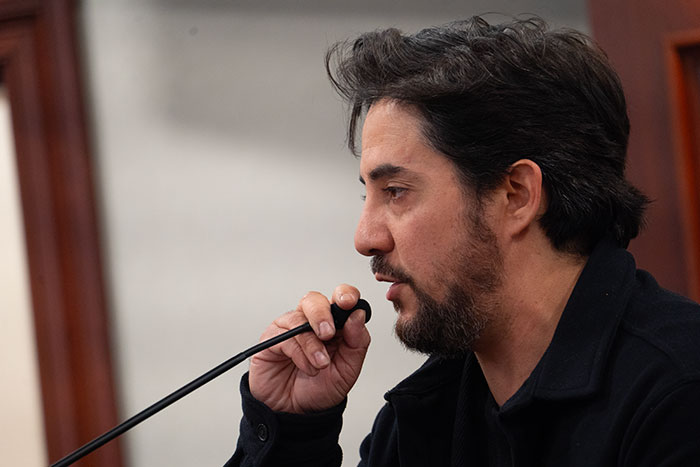Unique nativity scene displays strong message each holiday
While questions about marriage equality and immigration aren’t typically related to Christianity’s depiction of Jesus in the manger, members of the Claremont United Methodist Church beg to differ. Their yearly nativity, displayed along Foothill Boulevard between Harvard and Indian Hill, is designed as a controversial conversation-starter.
This year’s display is no different, drawing attention to people who have been ostracized and oppressed in society, like impoverished families and undocumented workers.
After the vandalism in 2011 of the church’s manger scene (which generated hate mail over its controversial topic from not just within the city, but across the United States), the congregation continues the conversation through its atypical manger scenes. There is no activity more fitting to the Christmas season, culminating with epiphany this Sunday, than to reflect on present-day social issues, according to Lead Pastor Reverend Sharon Rhodes-Wickett.
“We believe our faith is contemporary, it’s not just something that happened over 2000 years ago. It’s something that ought to be relevant and make a difference now,” Rev. Rhodes-Wickett said. “[Our faith] is not decorative, it’s gutsy and real, and that means wrestling with what that means today.”
For the past 7 years, artist John Zachary and congregation members of the local Methodist church haven’t shied from that goal, erecting the controversial nativity displays in an attempt to bring the Christian depiction of mother and child into the here and now. Past creations have included a homeless couple with a baby, another depicting Mexican immigrants and yet another displaying a woman cradling a baby behind the bars of a jail cell.
“The nativity scene has been done hundreds of thousands of times and everyone has that beautiful Fourth- Century version of the Nativity in their minds. I thought we should do something in a more contemporary context that people can relate to, something that represents what it would be like if Christ was born today.”
While not all are in favor of the church’s displays, it wasn’t until last year that a display evoked a physically negative response. The 2011 display—depicting both a heterosexual and a gay couple, side-by-side—gleamed with light as parishioners left the church’s Christmas Eve service. The following day, the gay couple was found toppled over while the heterosexual couple remained standing. The display’s Christmas tree was stolen and fluorescent light bulbs were broken, with an estimated $3000 worth of damage.
“We were stunned,” Barbara Troxell, chair of the church’s Creative Peacemaking Committee that sponsors the yearly nativity scene, shared last year. “It felt like a violation of the stance of the congregation as well as a violation of an artist’s good work.”
The hate mail poured in, but so did the support and—to the congregation’s delight—several families interested in joining the Claremont Methodists.
“The vandalism seemed to do a lot more good than harm,” Mr. Zachary said. “It caused interest among people who were looking for a church that wanted to be a part of the conversation.”
Though it may appear that the chain-link fence around this year’s nativity scene is placed to protect the display from another act of vandalism, it is actually a part of the artist’s design. Leading up to Christmas Day, Mary and Joseph could be found placed outside the chain-link fence, representing those Mr. Zachary feels today’s society shuns, not unlike Christianity’s holy family. The baby Jesus was nowhere in sight. On Christmas Eve, the figures were moved and placed inside the fenced-off space, with the gate left open.
“It symbolized the one day of the year we open our arms to all those we disenfranchise the rest of the year,” Mr. Zachary said. “Whatever we think about the virgin birth or the historical Nativity story, it stands as a symbol of acceptance and even celebration of those who have been outcast.”
The Claremont United Methodists plan to continue to preach the story behind the stable.
“The nativity’s real intent is to convey that the birth of Jesus isn’t just this sweet little manger with cows and sheep,” Rev. Rhodes-Wickett said. “There is a powerful message and that message is supposed to make us think.”
—Beth Hartnett
news@claremont-courier.com










0 Comments